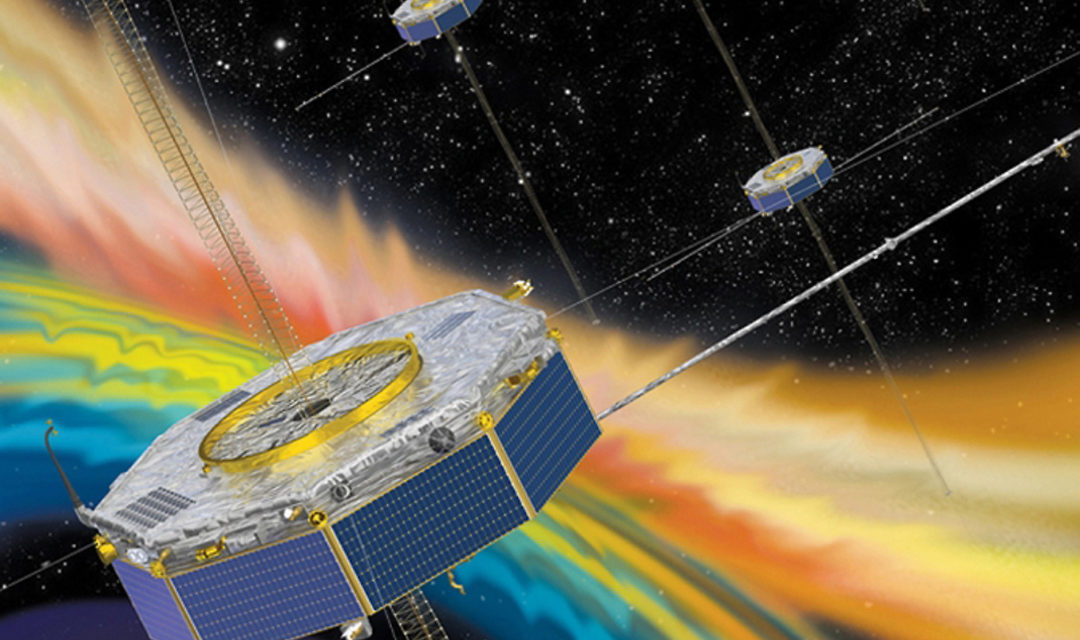NASA’s Magnetospheric Multiscale (MMS) mission – Diligent IAS 23/08/2019 – Posted in: Daily News
MAGNETOSPHERIC MULTISCALE (MMS) MISSION
For: Mains
Topics covered:
- All about the Magnetospheric Multiscale (MMS) mission
- What are Interplanetary shocks?
News Flash
Recently, Magnetospheric Multiscale (MMS) made the first high-resolution measurements of an interplanetary shock. These shocks are made of particles and electromagnetic waves launched by Sun.
These interplanetary shocks provide ideal testbeds for learning about larger universal phenomena.
Interplanetary shocks
- Interplanetary shocks are a type of collisionless shock — ones where particles transfer energy through electromagnetic fields instead of directly bouncing into one another. These collisionless shocks are a phenomenon found throughout the universe, including in supernovae, black holes and distant stars. MMS studies collisionless shocks around Earth to gain a greater understanding of shocks across the universe.
- Interplanetary shocks start at the Sun, which continually releases streams of charged particles called the solar wind.
- The solar wind typically comes in two types: slow and fast. When a fast stream of solar wind overtakes a slower stream, it creates a shock wave, just like a boat moving through a river creates a wave. The wave then spreads out across the Solar System.
Magnetospheric Multiscale Mission
The Magnetospheric Multiscale Mission (MMS) is a NASA robotic space mission, launched in 2015, to investigates how the Sun’s and Earth’s magnetic fields connect and disconnect, explosively transferring energy from one to the other in a process that is important at the Sun, other planets, and everywhere in the universe, known as magnetic reconnection.
Reconnection limits the performance of fusion reactors and is the final governor of geospace weather that affects modern technological systems such as telecommunications networks, GPS navigation, and electrical power grids.
MMS mission consists of constellation of four identical spacecraft that orbit/fly in tetrahedral formation around Earth through dynamic magnetic system surrounding our planet to study Magnetic reconnection.
Magnetic reconnection: It is phenomenons unique to plasma i.e. mix of negatively and positively charged particles that make up stars, fill space and account for an estimated 99% of the observable universe.
Science Goals
- MMS reveals, for the first time, the small-scale three-dimensional structure and dynamics of the elusively thin and fast-moving electron diffusion region.
- It does this in both of the key reconnection regions near Earth, where the most energetic events originate.
Mission Objective
- By observing magnetic reconnection in nature, MMS provides access to predictive knowledge of a universal process that is the final governor of space weather, affecting modern technological systems such as communications networks, GPS navigation, and electrical power grids.
- MMS will establish knowledge, methods and technologies applicable to future space weather missions and the future growth and development of space weather forecasting.
- The four identically instrumented MMS spacecraft fly in an adjustable pyramid-like formation that enables them to observe the three-dimensional structure of magnetic reconnection.
- MMS sensors will measure charged particle velocities, as well as electric and magnetic fields, with unprecedented (milliseconds) time resolution and accuracy needed to capture the elusively thin and fast-moving electron diffusion region.
- MMS probes reconnection of solar and terrestrial magnetic fields in the dayside and nightside of Earth’s magnetosphere, the only natural laboratory where it can be directly observed by spacecraft.
Important Info
In November 2016, it had set Guinness world record for the highest altitude fix of Global Positioning System (GPS) signal at 70000 kilometers above the surface of the Earth. It also had achieved the closest flying separation of a multi-spacecraft formation with only 7.2 km between the four satellites. |
Source: NASA GSFC
ALSO, READ MORE DAILY NEWS
- Stable cyclocarbon ring of 18 carbon atoms
- Iceland’s Okjokull glacier
- India becoming the world’s biggest sulphur dioxide emitter
- Bunker museum at Mumbai Raj Bhavan
You are on the Best Online IAS preparation platform. You are learning under experts.
We are present on Facebook- Diligent IAS, LinkedIn- Diligent IAS, YouTube- Diligent IAS, Instagram- Diligent IAS. Get in touch with us.

